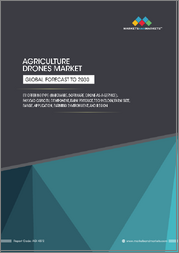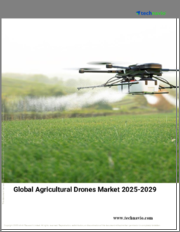
|
시장보고서
상품코드
1761684
세계의 요소 수요, 생산능력, 수량, 가격대, 업계 전망(-2034년)Urea Demand, Production Capacity, Volume and Price Range and Industry Outlook Report Till 2034 |
||||||
요소 수요 : 용도별
세계 요소 시장의 주요 촉진요인은 작물 성장에 필수적인 질소 함량이 높기 때문에 비료에 광범위하게 사용되어 가장 큰 점유율을 차지하고 있습니다. 멜라민 생산도 우레아에 크게 의존하고 있으며, 라미네이트 및 플라스틱과 같은 산업에 기여하고 있습니다. 요소는 반추동물의 소화를 촉진하는 비단백질 질소 공급원으로 동물사료에 이용되고 있습니다. 다른 용도로는 의약품, 화학 중간체, 제빙제 등이 있습니다. 농업 수요 증가, 산업적 용도 확대, 전 세계 축산업 증가로 인해 세계 요소 시장의 성장이 지속되고 있습니다.
주요 제조업체
우레아 생산에 종사하는 세계 주요 기업으로는 Qatar Fertilizer Company,CF Industries,SABIC,Yara International ASA,Koch Fertilizer LLC,OCI Industries,EuroChem,Hubei Chemical Fertilizer Company, Luxi Chemical Group, Zaklady Azotowe Pulawy SA, Sichuan Lutianhua 등이 있습니다.
2023년 러시아는 우레아의 주요 수출국으로 약 7,500kg을 출하했습니다. 중국이 5,300 킬로톤으로 그 뒤를 이었습니다. 한편, 브라질은 주요 수입국으로서 같은 해에 7,500 킬로톤 이상의 우레아를 수입했습니다.
시장 역학
농업 부문 수요 증가
식량과 농업에 대한 수요가 증가함에 따라 요소에 대한 수요가 증가하고 있습니다. 요소는 미국, 브라질, 인도 등에서 질소 함량이 높은 비료로 널리 사용되고 있습니다. 요소는 토양을 건강하게 만들고 식물의 강력한 성장을 지원하는 중요한 영양소를 공급합니다. 중국, 일본, 인도, 한국, 브라질과 같이 농업 부문이 큰 국가에서는 향후 몇 년 동안 우레아에 대한 수요가 증가할 것으로 예측됩니다.
요소 수요의 주요 촉진요인 중 하나는 세계 농업의 지속적인 성장입니다. 세계 인구가 증가함에 따라 작물에 대한 수요도 증가하고 있으며, 농부들은 작물 수확량을 향상시키고 증가하는 식량 수요를 충족시키기 위해 대부분 요소와 같은 질소 함량이 높은 비료에 의존하고 있습니다. 요소는 토양의 비옥도를 높이고 밀, 쌀, 옥수수 등 다양한 작물의 건강한 생육을 지원하기 때문에 현대 농업에 필수적인 투입물입니다.
유기농업으로의 전환
그러나 유기농업에 대한 관심이 높아지면서 우레아 사용에 영향을 미치고 있습니다. 요소는 건강과 환경에 해를 끼칠 수 있는 암모니아와 이산화탄소를 배출하기 때문에 화학물질을 사용하지 않는 방법을 선택하는 사람들이 늘고 있습니다. 유기농법에서는 식물이나 동물의 배설물로 만든 천연 비료와 해충 방제법을 사용합니다. 예를 들어, 인도는 유기 농업을 장려하기 위해 PKVY(Paramparagat Krishi Vikas Yojna)라는 프로그램을 시작했으며, 이는 요소와 같은 화학 비료의 사용을 줄일 수 있습니다.
우레아 사용을 제한하는 환경 규제
우레아의 생산과 과도한 사용은 환경에 악영향을 미칩니다. 요소는 암모니아와 같은 오염 물질을 방출하고, 토양을 산성화시키고, 자연 비옥도를 낮추며, 유익한 미생물에 해를 끼칠 수 있습니다. 또한, 너무 많은 요소는 토양의 독성을 증가시켜 씨앗의 성장에 악영향을 미치고 작물에 손상을 줄 수 있습니다. 서유럽에서는 일부 국가에서 고체 요소 비료를 금지하기 시작했습니다. 많은 지역의 엄격한 환경 규제는 향후 요소 시장의 성장을 제한할 것으로 예측됩니다.
세계의 우레아 시장에 대해 조사 분석했으며, 시장 역학 및 산업 동향, 각 부문별 수요, 제조업체 프로파일 등의 정보를 전해드립니다.
목차
제1장 서론
제2장 시장 요약
- 시장 발전
- 수요 개요
- 산업 구조
- 전략상 문제
- 최종 용도 동향
- 성장 예측
제3장 경제와 에너지 전망
- GDP와 인구통계
- 금융 정책과 재정 정책
- 원유 생산과 가격
- 천연가스
- 전기요금
제4장 최종 용도 부문 실적
- 농업
- 기타
제5장 요소 서론과 시장 개요
- 제품 설명
- 등급과 특성
- 원재료
- 제조 공정
- 환경 문제
- 밸류체인
- 용도
제6장 시장 역학과 산업 동향
- 시장 역학
- 성장 촉진요인
- 성장 억제요인
- 기회
- 과제
제7장 세계의 요소 수요 분석 : 용도별(수량과 금액)(2018년-2034년)
- 전략상 문제와 COVID-19의 영향
- 수요 분석과 예측(2018년-2034년)
- 수요
- 수요 성장률
- 성장 촉진요인 분석
- 세계의 요소 시장 : 용도별
- 비료
- 요소 포름알데히드 수지
- 멜라민
- 동물사료
- 기타
제8장 수요 분석과 시장 리뷰 : 지역/국가별(수량과 금액)(2018년-2034년)
- 전략상 문제와 COVID-19의 영향
- 수요 분석과 예측(2018년-2034년)
- 수요
- 수요 성장률
- 요소 시장 : 용도별
- 북미
- 미국
- 캐나다
- 멕시코
- 서유럽
- 독일
- 프랑스
- 이탈리아
- 영국
- 스페인
- 기타 서유럽
- 중유럽 및 동유럽
- 러시아
- 폴란드
- 기타 중유럽 및 동유럽
- 아시아태평양
- 중국
- 일본
- 인도
- 한국
- 기타 아시아태평양
- 중남미
- 중동 및 아프리카
제9장 가격 분석
제10장 주요 전략상 문제와 사업 기회 평가
- 시장의 매력 평가
- 전망과 타겟 시장 조사
제11장 전략적 추천과 제안
제12장 기업 분석
- 요소 제조업체 개요/기업 분석
- 기본 상세
- 본사 및 주요 시장
- 소유
- 기업 재무
- 제조거점
- 세계의 판매
- 총 직원수
- 제품 포트폴리오/서비스/솔루션
- 채택된 주요 사업 전략과 Prismane Consulting 개요
- 최근 발전
- 대상 기업
- Qatar Fertilizer Company
- CF Industries
- SABIC
- Yara International ASA
- Koch Fertilizer LLC
- OCI Industries
- EuroChem
- Hubei Chemical Fertilizer Company
- Luxi Chemical Group
- Zaklady Azotowe Pulawy SA
- Sichuan Lutianhua
- Rui Xing Group
- 기타 제조업체
제13장 부록
LSH 25.07.11Urea, also called carbamide, is a white, crystal-like substance made from carbonic acid. It is produced by combining carbon dioxide with ammonia and is then turned into small pellets or granules for use. Urea is not only made in factories but is also naturally produced in the bodies of mammals during the breakdown of proteins.
In farming, urea is mainly used as a fertilizer because it provides nitrogen, an essential nutrient for plant growth. It also serves as a protein supplement in animal feed and is used in the production of other materials like resins and diesel exhaust fluids. Urea-formaldehyde compounds, in particular, are valued in agriculture for slowly releasing nitrogen into the soil.
Urea demand, by Application
The global urea market is primarily driven by its widespread use in fertilizers, which accounts for the largest share due to its high nitrogen content essential for crop growth. Melamine production also relies heavily on urea, serving industries such as laminates and plastics. Urea is utilised in animal feeds as a non-protein nitrogen source to advance digestion in ruminants. Other applications include pharmaceuticals, chemical intermediates, and de-icing agents. Growing agricultural demand, expanding industrial uses, and rising livestock farming worldwide continue to fuel the global urea market's growth.
Key Manufacturers
Some of the top global companies involved in urea production include Qatar Fertilizer Company, CF Industries, SABIC, Yara International ASA, Koch Fertilizer LLC, OCI Industries, EuroChem, Hubei Chemical Fertilizer Company, Luxi Chemical Group, Zaklady Azotowe Pulawy SA, and Sichuan Lutianhua.
In 2023, Russia was the leading exporter of urea, sending out about 7,500 kilo tons. China followed with over 5,300 kilo tons. On the other hand, Brazil was the top importer, bringing in more than 7,500 kilo tons of urea during the same year.
Market Dynamics
Rising demand from Agriculture segment
The growing need for food and farming is boosting the demand for urea. It is used widely as a nitrogen-rich fertilizer in countries like the United States, Brazil, and India. Urea helps improve soil health and provides key nutrients that support strong plant growth. Countries with large agricultural sectors, such as China, Japan, India, Korea, and Brazil, are expected to see rising demand for urea in the coming years.
One of the primary drivers of urea demand is the continuous growth of the global agricultural industry. As the world's population increases, the need for crop also increases and farmers mostly rely on nitrogen-rich fertilizers like urea to improve crop yields and meet the growing food demand. Urea helps enhance soil fertility and supports the healthy growth of various crops including wheat, rice, and corn, making it an essential input in modern agriculture.
Shift Towards Organic Farming
However, the increasing interest in organic farming is affecting the use of urea. As urea releases ammonia and carbon dioxide, which can be harmful to health and the environment, more people are choosing chemical-free methods. Organic farming uses natural fertilizers and pest control methods made from plant and animal waste. For instance, India has launched a program called Paramparagat Krishi Vikas Yojna (PKVY) to promote organic farming, which could reduce the use of chemical fertilizers like urea.
Environmental Regulations Limiting Urea Use
Urea production and overuse can harm the environment. It releases pollutants like ammonia, which can make soil acidic, lower its natural fertility, and harm beneficial microbes. Too much urea can also negatively affect seed growth and damage crops due to increased soil toxicity. Some countries in Western Europe have even started banning solid urea fertilizers. Strict environmental rules in many places are expected to limit the future growth of the urea market.
Table of Contents
1. Introduction
- Scope
- Market Coverage
- Application
- Regions
- Countries
- Years Considered
- Historical - 2018 - 2023
- Base - 2024
- Forecast Period - 2025 - 2034
- Research Methodology
- Approach
- Research Methodology
- Prismane Consulting Market Models
- Assumptions & Limitations
- Abbreviations & Definitions
- Conversion Factors
- Data Sources
2. Market Synopsis
- Market Evolution
- Demand Overview
- Industry Structure
- Strategic Issues
- End-use Trends
- Growth Forecast
3. Economic & Energy Outlook
- GDP and Demographics
- Monetary & Fiscal Policies
- Crude Oil Production and prices
- Natural Gas
- Electricity Prices
4. End-use Sector Performance
- Agriculture
- Others
5. Introduction to Urea and Market Overview
- Product Description
- Grades & Properties
- Raw Material
- Manufacturing Process
- Environmental Issues
- Value Chain
- Applications
6. Market Dynamics and Industry Trends
- Market Dynamics
- Drivers
- Restraints
- Opportunities
- Challenges
7. Global Urea Demand Analysis, By Application (Volume, Value) (2018-2034)
- Strategic Issues and COVID-19 Impact
- Demand Analysis and Forecast (2018- 2034)
- Demand
- Demand Growth Rate (%)
- Driving Force Analysis
- Global Urea Market, By Application
- Fertilizers
- Urea-Formaldehyde Resins
- Melamine
- Animal Feeds
- Others
8. Demand Analysis and Market Review, By Region, By Country (Volume, Value), (2018- 2034)
- Strategic Issues and COVID-19 Impact
- Demand Analysis and Forecast (2018 - 2034)
- Demand
- Demand Growth Rate (%)
- Urea Market, By Application
Note: Demand Analysis has been provided for all major Regions / Countries as mentioned below. The demand (consumption) split by application has been provided for each of the countries / regions in Volume (Kilo tons) and Value (USD Million).
- North America
- USA
- Canada
- Mexico
- Western Europe
- Germany
- France
- Italy
- United Kingdom
- Spain
- Rest of Western Europe
- Central & Eastern Europe
- Russia
- Poland
- Rest of Central & Eastern Europe
- Asia-Pacific
- China
- Japan
- India
- South Korea
- Rest of Asia-Pacific
- Central & South America
- Middle East & Africa
Note: CAGR will be calculated for all the applications to arrive at the regional / global demand growth for the forecast period (2025 - 2034)
9. Pricing Analysis
10. Key Strategic Issues and Business Opportunity Assessment
- Market Attractiveness Assessment
- Prospective & Target Market Study
11. Strategic Recommendation & Suggestions
12. Company Analysis
- Urea Manufacturers Profiles/ Company Analysis
- Basic Details
- Headquarter, Key Markets
- Ownership
- Company Financial
- Manufacturing Bases
- Global Turnover
- Total Employee
- Product Portfolio / Services / Solutions
- Key Business Strategies adopted and Prismane Consulting Overview
- Recent Developments
- Companies Covered -
- Qatar Fertilizer Company
- CF Industries
- SABIC
- Yara International ASA
- Koch Fertilizer LLC
- OCI Industries
- EuroChem
- Hubei Chemical Fertilizer Company
- Luxi Chemical Group
- Zaklady Azotowe Pulawy SA
- Sichuan Lutianhua
- Rui Xing Group
- Other Manufacturers
Note: This section includes company information, company financials, manufacturing bases and operating regions. Company financials have been mentioned only for those companies where financials were available in SEC Filings, annual reports, or company websites. All the reported financials in this report are in U.S. Dollars. Financials reported in other currencies have been converted using average currency conversion rates. Company profiles may include manufacturers, suppliers, and distributors.
13. Appendices
- Demand - Regions
- Demand - Countries



















